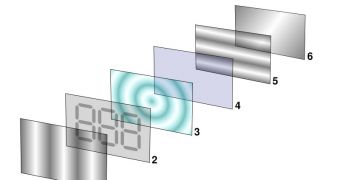Currently, Taiwan-based LCD makers that produce panels larger than four inches are not allowed to invest in China and, in addition, their investments in advanced semiconductor manufacturing and production of ethylene are limited. When President Ma Ying-jeou was elected in 2008, he made a promise that he would work towards more amiable relations with Beijing. In accordance with this promise, Taiwan Premier Wu Den-yih will decide, this month, which industries will be allowed to invest in China.
According to a study made by DisplaySearch in September, the number of LCD televisions sold on the Chinese market, which is also seen as the fastest growing major economy, is estimated to have grown by 87%, specifically to 25 million sets in 2009. The same study indicates that the market will continue to increase by another 32% during the ongoing year.
Expecting positive decisions on the part of the Government, Taiwan's benchmark stock index rose 78% in 2009, as China ties are expected to significantly boost the island's economy. AU Optronics Chairman K.Y. Lee said, on December 9, that he expected the Government to change its policy and allow it to build factories in China. Among the other Taiwanese LCD makers that also hope to gain permission for such investments are Chi Mei Optoelectronics Corp. (largest LCD maker in Taiwan, alongside AU) and the world's two largest custom chip makers, Taiwan Semiconductor Manufacturing Co. and United Microelectronics Corp.
Data from Taiwan's Straits Exchange Foundation indicates that the country invested $150 million in China over the past 20 years, whereas the latter invested only NT$1.2 billion ($38 million) in Taiwan since June 30. The former may finally start catching up if the government eases restrictions, even though the building of ethylene plants will still be disallowed.
Korean companies moved slightly faster than those in Taiwan and have already announced their plans to built plants in China. LG Display will invest $4 billion in an LCD plant, which it will build in Guangzhou, and Samsung will spend 2.6 trillion won ($2.3 billion) on its own China-based panel factory.

 14 DAY TRIAL //
14 DAY TRIAL //